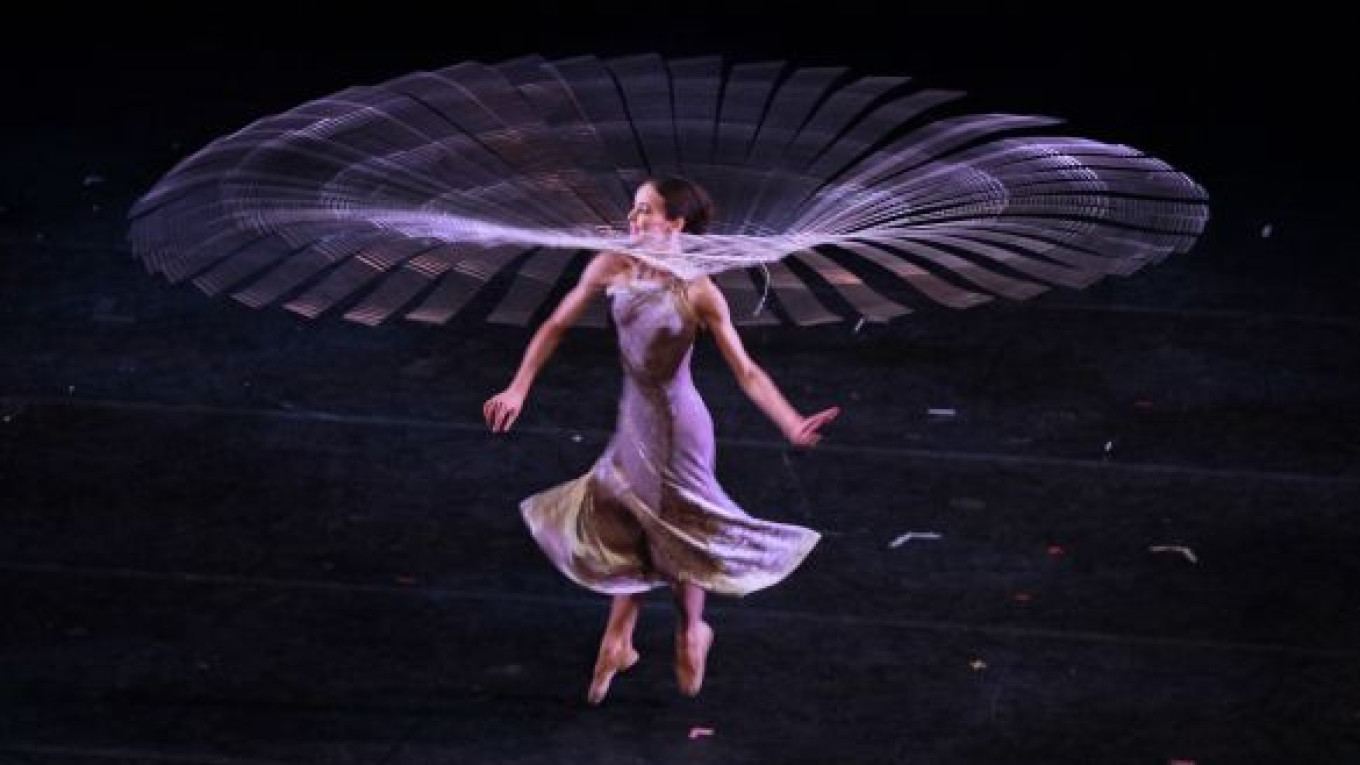ST. PETERSBURG — The Mariinsky Theater looked to the future as it celebrated its 150th birthday with a gala night that saw segments from the ballets “Swan Lake” and “The Sleeping Beauty,” featuring ballerinas Ulyana Lopatkina and Diana Vishnyova, and talk of the new stage that is set to open in 2012.
Legendary Bolshoi Theater ballerina Maya Plisetskaya was among the guests Friday who saw an exquisite performance by Lopatkina as the dying swan. Artistic director Valery Gergiyev conducted, with pianist Denis Matsuyev accompanying.
Both the opera and ballet troupes are in desperate need of more space, Gergiyev said in an interview. After years of delays and changes, the new stage, designed by Canadian architect Jack Diamond, looks to be on schedule to open the year after next.
“We’ll have more world premieres, more foreign companies invited, more visitors,” Gergiyev said. “It’s awkward to say, but sometimes we even have to keep stage scenery outside,” because there’s no room for it elsewhere.
Prime Minister Vladimir Putin attended a performance of “Swan Lake” on Saturday, a day after the gala, before attending a meeting of the theater’s board of trustees.
“I congratulate all friends, trustees and partners of the Mariinsky Theater on its 150-year anniversary,” Putin said, Interfax reported. “There is really a very good troupe here, with a brilliant tradition, which has developed successfully under the leadership of Valery Gergiyev.”
Diamond was chosen to design the new theater after Parisian-architect Dominique Perrault, who won an international competition in 2003, backed out of the project in 2007.
Diamond’s design is more inclusive with see-through facades so that passers-by can look into the theater itself.
“The social dimension is always important in architecture, and in a public building like this, it’s even more important. To my mind, it’s significant that people passing in the street see the crowds gathering inside,” Diamond said in an interview. “Old opera houses were blank; you had to go through the wall, and there was a mystique. But now, especially with youth who are coming less [to the theater] … it’s important for them to see people in jeans or dressed up or having a party in such places. It removes the mystique, so the transparency of a building today gives people the confidence to go.”
Diamond, a big fan of classical music, specializes in acoustics for concert halls and said he realizes that excellent acoustics are always “more important for opera houses than architecture.”
Gergiyev confessed that Diamond’s experience in building concert halls was the determinant in his choice for the architect and expressed his approval of the design.
“Jack Diamond built an opera theater in Toronto, and it was important for us to hear how voices and orchestra sound there, how convenient it is there to rehearse and even how quickly the participants can get to the stage, as one of our famous singers could not get to the stage from her dressing room in London for 10 minutes and even missed one of the major scenes,” Gergiyev said.
The Mariinsky Theater traces its history back to 1783 when it was founded by Catherine the Great. But its current main building was designed by architect Alberto Cavos after the original theater burned down.
The theater opened on Oct. 2, 1860, with Mikhail Glinka’s “A Life for the Tsar,” and got its present name after Maria, wife of Tsar Alexander II.
The Mariinsky brought the world the premieres of Mussorgsky’s “Boris Godunov,” Tchaikovsky’s “The Queen of Spades,” Prokofiev’s “Romeo and Juliet” and other notable works. Its ballet company has included Anna Pavlova, Vaslav Nijinsky, Rudolf Nureyev and Mikhail Baryshnikov.
“The current building gave a great chance to shine to young Tchaikovsky, Rimsky-Korsakov, Mussorgsky, as well as to Wagner, Verdi and Berlioz,” Gergiyev said. “It will be great if in five to seven years modern living composers will get the same fame thanks to the new building.”
Gergiyev added at a news conference Wednesday that the Mariinsky might stage opera versions of two Russian classics — Nikolai Gogol’s “Dead Souls” and Mikhail Bulgakov’s “Heart of a Dog” in the forthcoming season, Interfax reported.
A Message from The Moscow Times:
Dear readers,
We are facing unprecedented challenges. Russia's Prosecutor General's Office has designated The Moscow Times as an "undesirable" organization, criminalizing our work and putting our staff at risk of prosecution. This follows our earlier unjust labeling as a "foreign agent."
These actions are direct attempts to silence independent journalism in Russia. The authorities claim our work "discredits the decisions of the Russian leadership." We see things differently: we strive to provide accurate, unbiased reporting on Russia.
We, the journalists of The Moscow Times, refuse to be silenced. But to continue our work, we need your help.
Your support, no matter how small, makes a world of difference. If you can, please support us monthly starting from just $2. It's quick to set up, and every contribution makes a significant impact.
By supporting The Moscow Times, you're defending open, independent journalism in the face of repression. Thank you for standing with us.
Remind me later.


